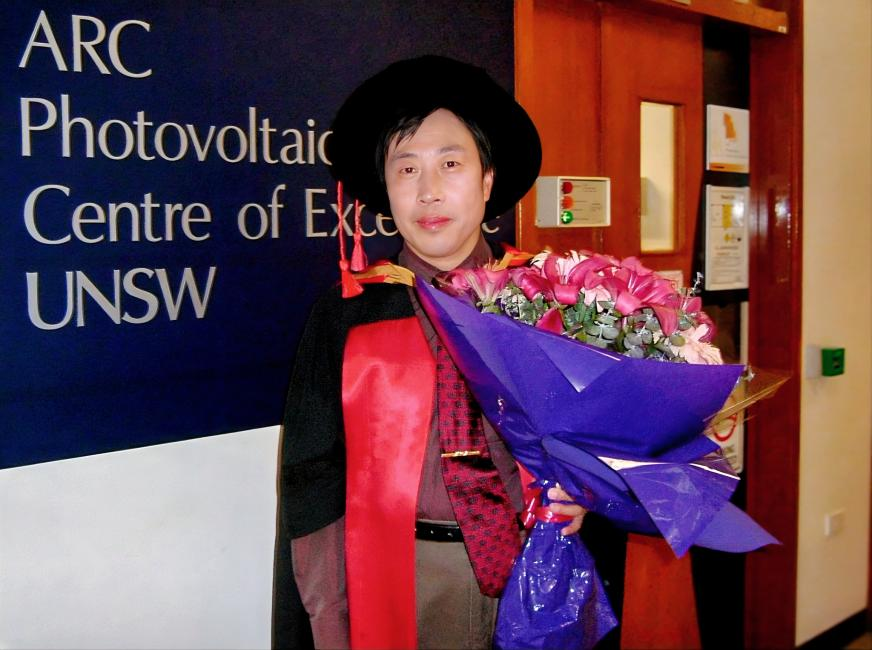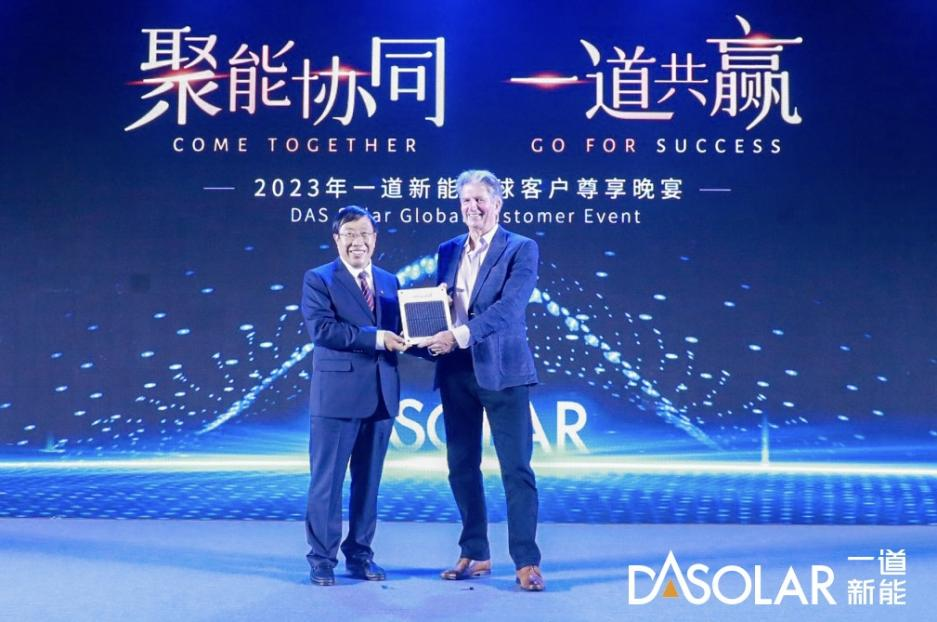Years of Dr. DY Song at UNSW's Research Lab and Collaborations Upon Returning to China
2025-04-07
— Celebrating the 50th Anniversary of Professor Martin Green's PV Lab
Editor's note: Dr. Dengyuan Song is the CTO of DAS Solar. He earned his Ph.D. at the University of New South Wales (UNSW, Sydney) in Australia under the supervision of Professor Martin Green. In celebration of the 70th anniversary of UNSW and the 50th anniversary of Professor Green's PV lab, he has written the following reflection.
As UNSW Sydney embarks on its 75th anniversary, Professor Martin Green's PV lab also marks its 50th year. This milestone brings back memories of my time with Professor Green and my colleagues in the research lab, as well as my ongoing collaboration with them after returning to China. Over the years, the laboratory has made remarkable contributions: from pioneering PERC and TOPCon solar cell technologies to their large-scale industrial applications, from polycrystalline silicon thin-film solar cells to cutting-edge research on quantum dot solar cells for third-generation PV technology. As the founder and leader of UNSW's photovoltaic research center, Professor Green has dedicated half a century to reshaping the global solar industry and has nurtured a generation of key figures in China's solar sector.

My Journey with Professor Green
From 2000 to 2009, I studied and worked at Professor Green's lab, engaging in research on crystalline silicon solar cells, polycrystalline silicon thin-film solar cells, and quantum dot solar cells for third-generation PV technology. In every weekly seminar and research presentation, Professor Green meticulously reviewed our experimental results, analyzed failures, and provided insightful guidance at critical research junctures.
Professor Green led by example. His dedication to scientific inquiry left a profound impact on every researcher in the lab, fostering a meticulous scientific spirit. Professor Green always encouraged cross-cultural academic exchanges, which helped us break traditional research paradigms and make groundbreaking scientific discoveries. The laboratory was a global hub for photovoltaic talent, attracting researchers and postgraduate students from more than 20 countries. It has rightfully been called the cradle of the solar industry. Many of its alumni, including Dr Zhengrong Shi, Jianhua Zhao, Aihua Wang, Guangchun Zhang, and Ximin Dai, became pioneers in China's solar sector, driving the rapid development of the industry from the ground up.

UNSW's rise to a global TOP20 university is inseparable from the groundbreaking research of extraordinary scholars like Professor Green. As a world authority in photovoltaics and the “Father of Solar Energy”, he has been my doctoral supervisor and co-author on numerous research papers. Over the past five decades, he and his team have consistently innovated PV technologies, developing high-efficiency, low-cost solar cell solutions. Today, over 90% of solar power systems worldwide incorporate these technologies, playing a crucial role in addressing global climate challenges.
A Trailblazer in PV Technology
In 1983, Professor Green, together with Dr. Jianhua Zhao and Dr. Aihua Wang etc, led a team that invented PERC solar cell technology, increasing solar cell conversion efficiency by over 50% in relative terms—from 16.5% in the early 1980s to 25% in the early 2000s. This achievement set a major milestone in crystalline silicon photovoltaics. PERC technology was widely adopted in mass production by 2017 and accounted for 91.2% of the global solar market share by 2021, becoming the most widely deployed PV technology.
Another landmark contribution by Professor Green was the development of the first “TOPCon” prototype solar cell in 1981. Professor Green and Blakers fabricated the first device with the metal contact in tunnelling MOS cells replaced by doped poly-Si, resulting in Voc of 660–665 mV, substantially above the then best p-n junction voltage. This discovery laid the foundation for today's TOPCon solar cell technology, which has become a dominant force in the industry.
Beyond his contributions to PV technology, Professor Green has also played a crucial role in advancing China's solar industry. In recognition of his impact, he was awarded China's prestigious “Friendship Award” in 2007, the highest honor the Chinese government bestows upon foreign experts.

Research Collaboration with Professor Green
Professor Green has been deeply committed to bridging the gap between laboratory research and industrial application. He has always valued collaboration with China's solar sector. After returning to China in 2009, I joined a leading Chinese solar company as CTO and have maintained a strong research partnership with UNSW and Professor Green's team. Now, as the CTO of DAS Solar, I'm honored to continue collaborating with Professor Green's laboratory. DAS Solar is participating in two of his key research projects on high-efficiency PERC/TOPCon Hybrid solar cells and Low-cost >30% efficient silicon PV solar cells achieved through singlet fission(SFOS).
The SFOS cell has a theoretical efficiency exceeding 40%. This technology builds upon DAS Solar's high-efficiency N-type TOPCon solar cells, integrating a novel photoconversion film with singlet fission properties on the cell surface. The singlet fission molecular layer can be deposited on top of TOPCon solar cell, where one high-energy photon is absorbed into a singlet state, undergoes fission and results in two excited triplet states. It pushes the quantum efficiency beyond 100%, enabling broader solar spectrum utilization. The fundamental research for this technology is driven by UNSW's theoretical expertise, while DAS Solar provides engineering and industrialization capabilities to explore its feasibility for mass production.
Looking back, the past 50 years have been a golden era of PV innovation, with Professor Martin Green and his lab leading the charge. His contributions have shaped the modern solar industry and inspired countless researchers and professionals, including myself. As we celebrate the 50th anniversary of his lab and the 75th anniversary of UNSW, I look forward to further collaboration, advancing PV technology to new frontiers and contributing to a cleaner, more sustainable future for all.







 浙公网安备33080302000236
浙公网安备33080302000236